
Things to see on a day trip to Nîmes
Nîmes is a city in the Occitanie region of southern France (map). Famous for its impeccably preserved Roman monuments, Nîmes is often called the French Rome and is a popular destination for visitors to the region. On my recent stay in nearby Montpellier, I made it a point to go on a day trip to Nîmes and see its Roman heritage. I discovered a spotless city with impressive Roman buildings, beautiful museums, lively squares and leafy streets. Read on about my walk around Nîmes and the places I visited along the way.
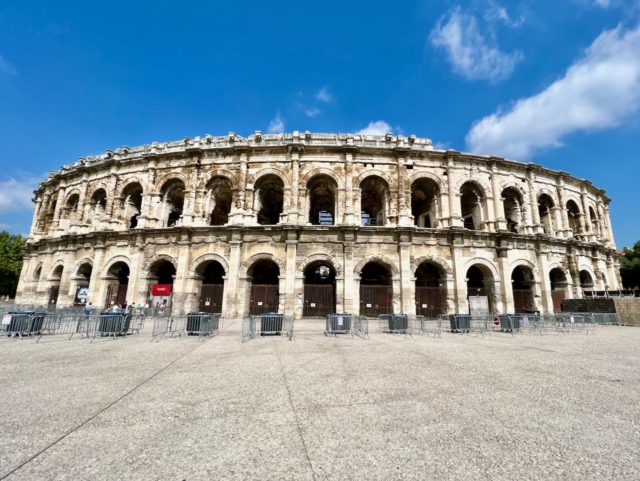

Located roughly between Montpellier and Avignon, Nîmes can trace its roots back several thousand years. The city rose to prominence as a regional capital of the Roman Empire situated on the Via Domitia, an important road connecting Italy and Hispania (present-day Spain). Around the 1st century BC, Caesar Augustus (also known as Octavian) commissioned the building of walls, city gates and monuments, some of which can still be seen today. These historic places can easily be visited on a day trip to Nîmes. The old town is pretty compact, making a walking tour the best option to see the highlights.
Nîmes walking route
I kicked off my visit at the grand Fontaine Pradier. If you’re arriving by car, there’s a large parking garage under the square. Gare de Nîmes, the main train station, is a 5-minute walk away. The walking route below can easily be covered in several hours, though more time may be needed for a tour of the Arena and Tour Magne, and if you choose to visit the museums.
Fontaine Pradier
Fontaine Pradier is the centre-piece of the triangular Esplanade Charles de Gaulle. Opened in 1845, the fountain is an important symbol of Nîmes.
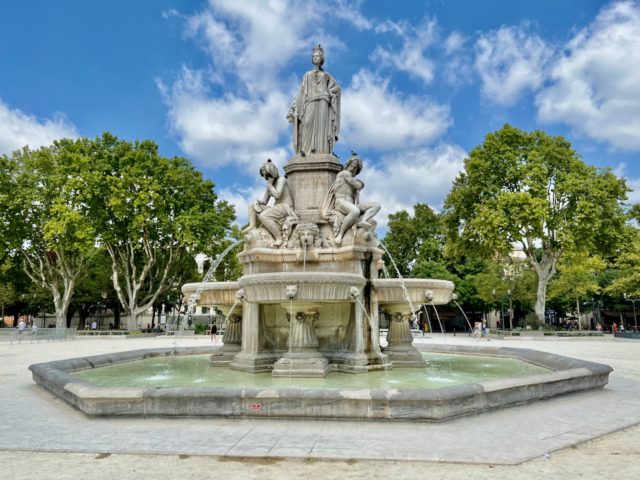
Arena of Nîmes
From Fontaine Pradier, it’s a short stroll to the most important attraction in Nîmes: the Roman Arena, one of the best preserved Roman amphitheatres in the world. It’s amazing to think that this arena, fashioned after the Colosseum in Rome and just a tad younger, was built more than 2,000 years ago! It could accommodate 24,000 spectators and is still used for events.
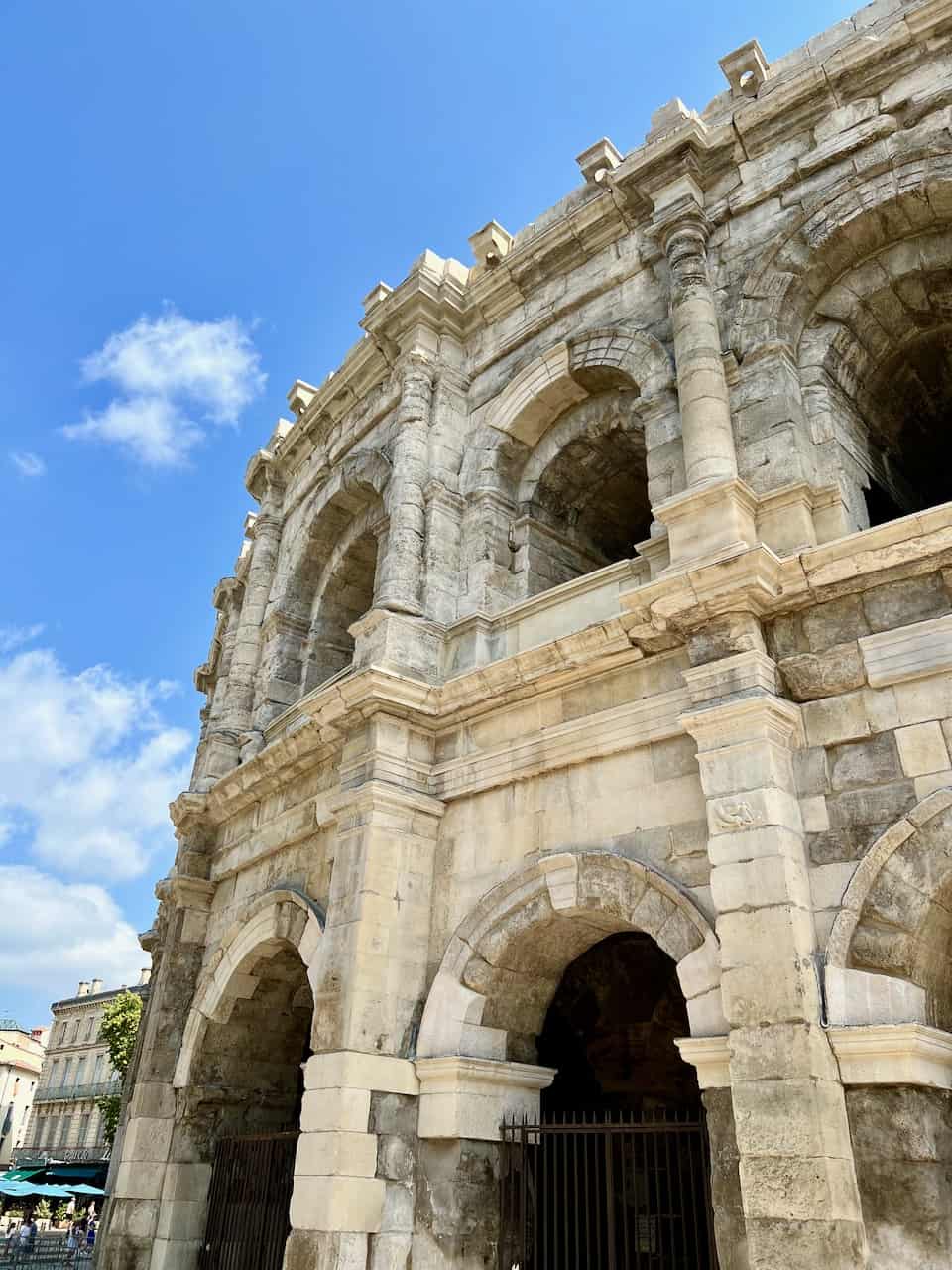
At the ticket office, visitors can purchase a single ticket for 3 attractions (the Arena, Tour Magne and Maison Carrée) with the Musée de la Romanité (Roman archeological museum) as an extra option.
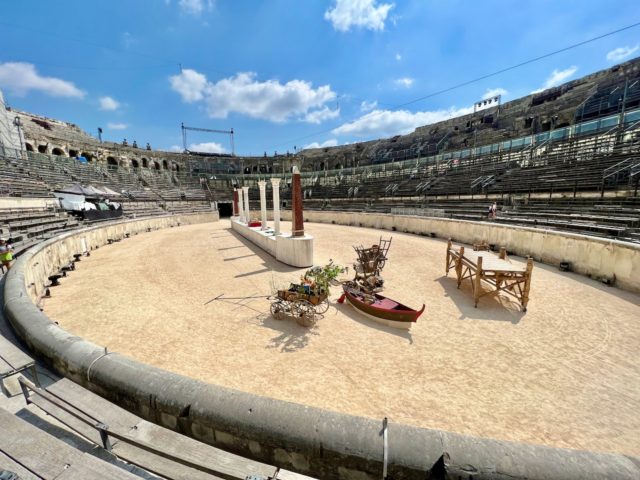
Musée de la Romanité
The Musée de la Romanité is located across the road from the Arena. This stylish building, opened in 2018, houses important artifacts and uses ingenious methods to bring the city’s Roman past to life. This museum is a must-visit for history buffs!
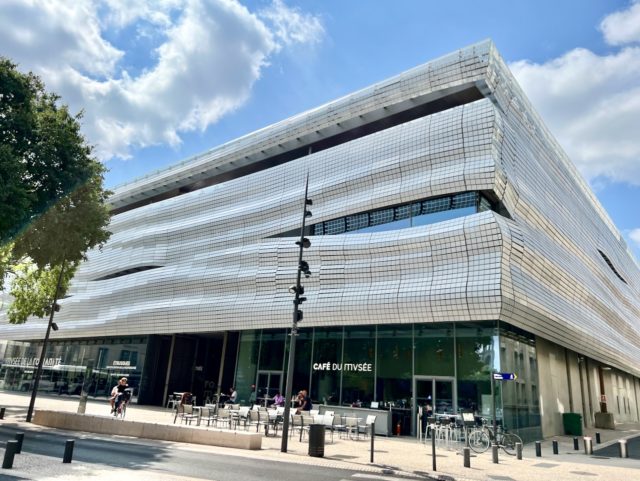
Old town
Behind the Arena lies the maze of streets of the old town. I spent some time walking aimlessly around and discovered some lively squares such as Place du Marché, with its Crocodile Fountain and (touristy) restaurants.
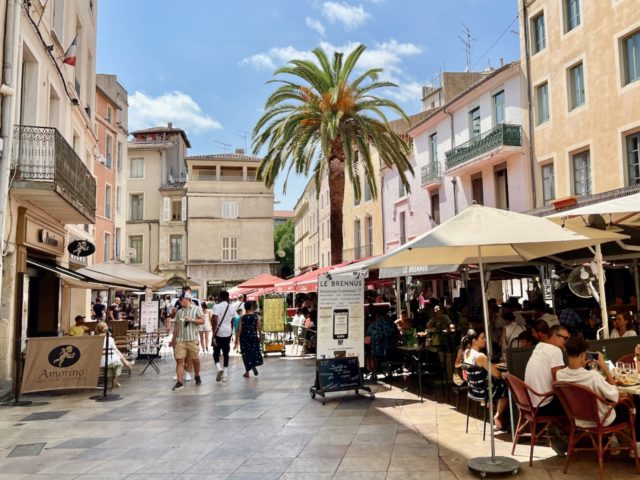
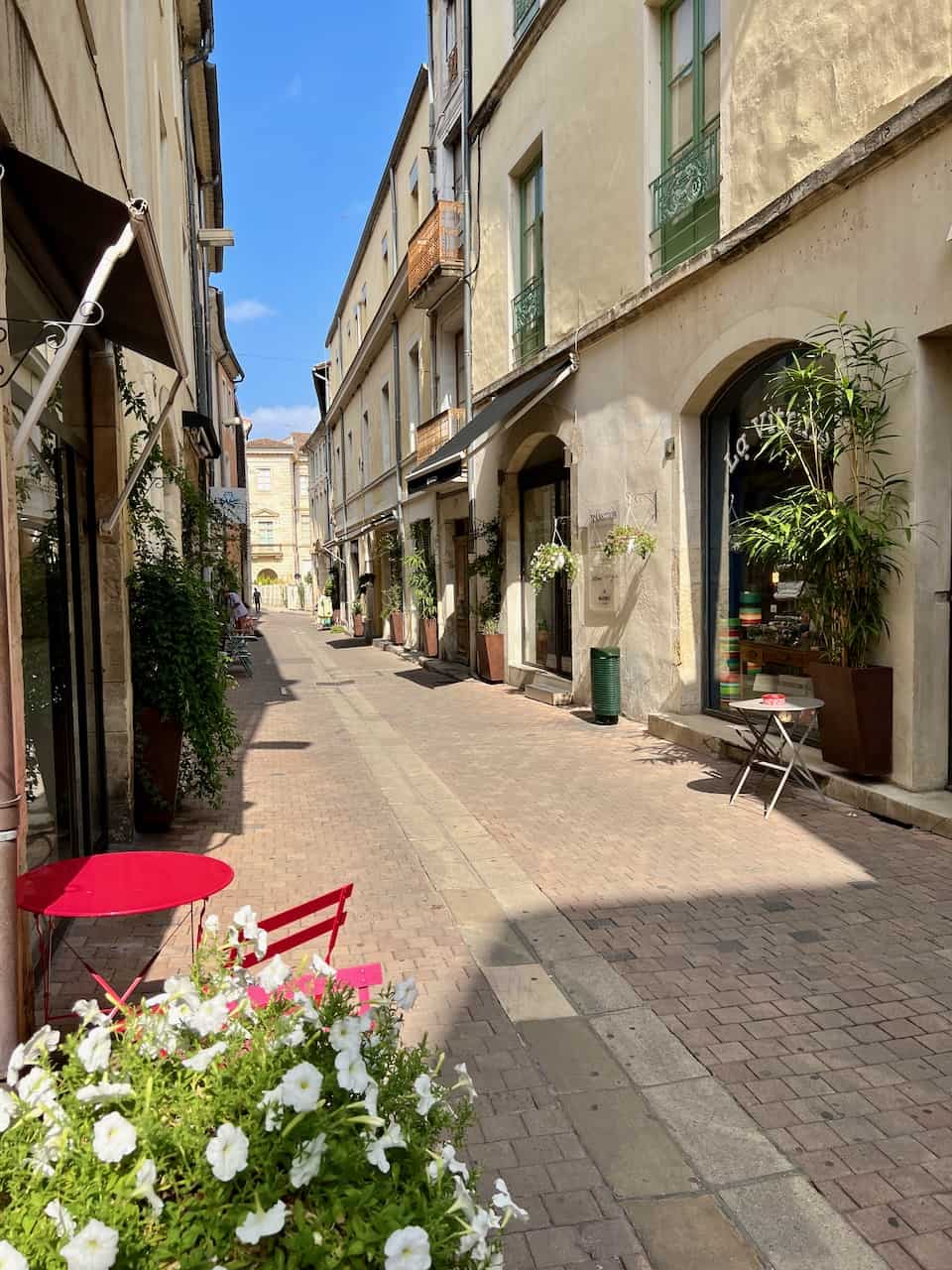
In the quieter Rue des Greffes, I stumbled upon a fabulous restaurant called Le Menestrel. It turned out to be one of the best meals I had on this trip!

Eglise St. Paul
After lunch, I continued my stroll around the old town and arrived at Eglise St. Paul, a stunning 19th century neo-Romanesque church. Inside, you’ll see an impressive nave with a blue ceiling, frescoes and numerous beautifully decorated chapels.
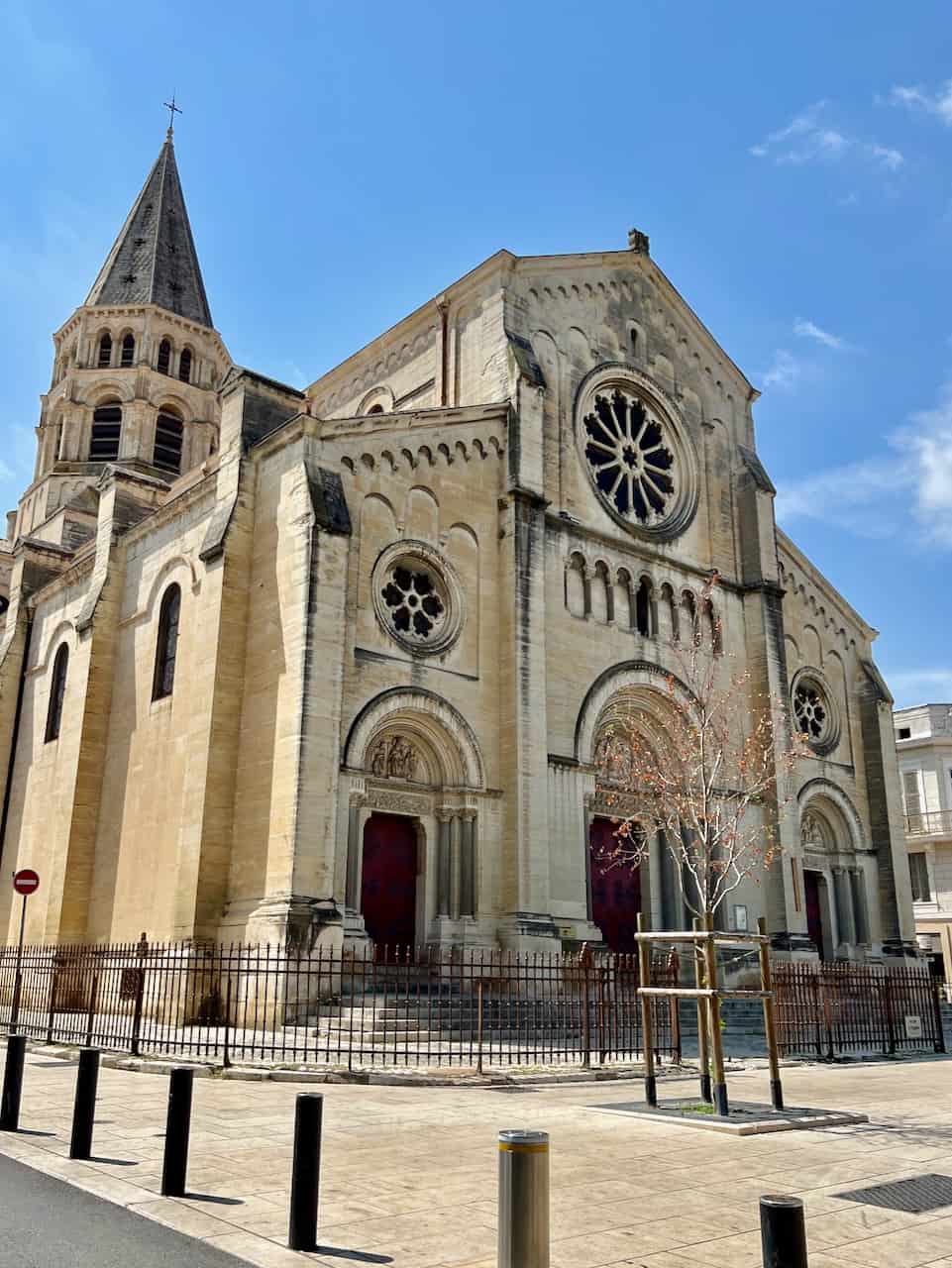
Maison Carrée
Just up the road from Eglise St. Paul lies another top attraction in Nîmes, the Maison Carrée. Built in the 1st century BC, it’s one of the best preserved Roman temples in the world. In fact, it has miraculously survived intact for more than 2,000 years! Inside, I found a short video and exhibitions about the history of Nîmes.
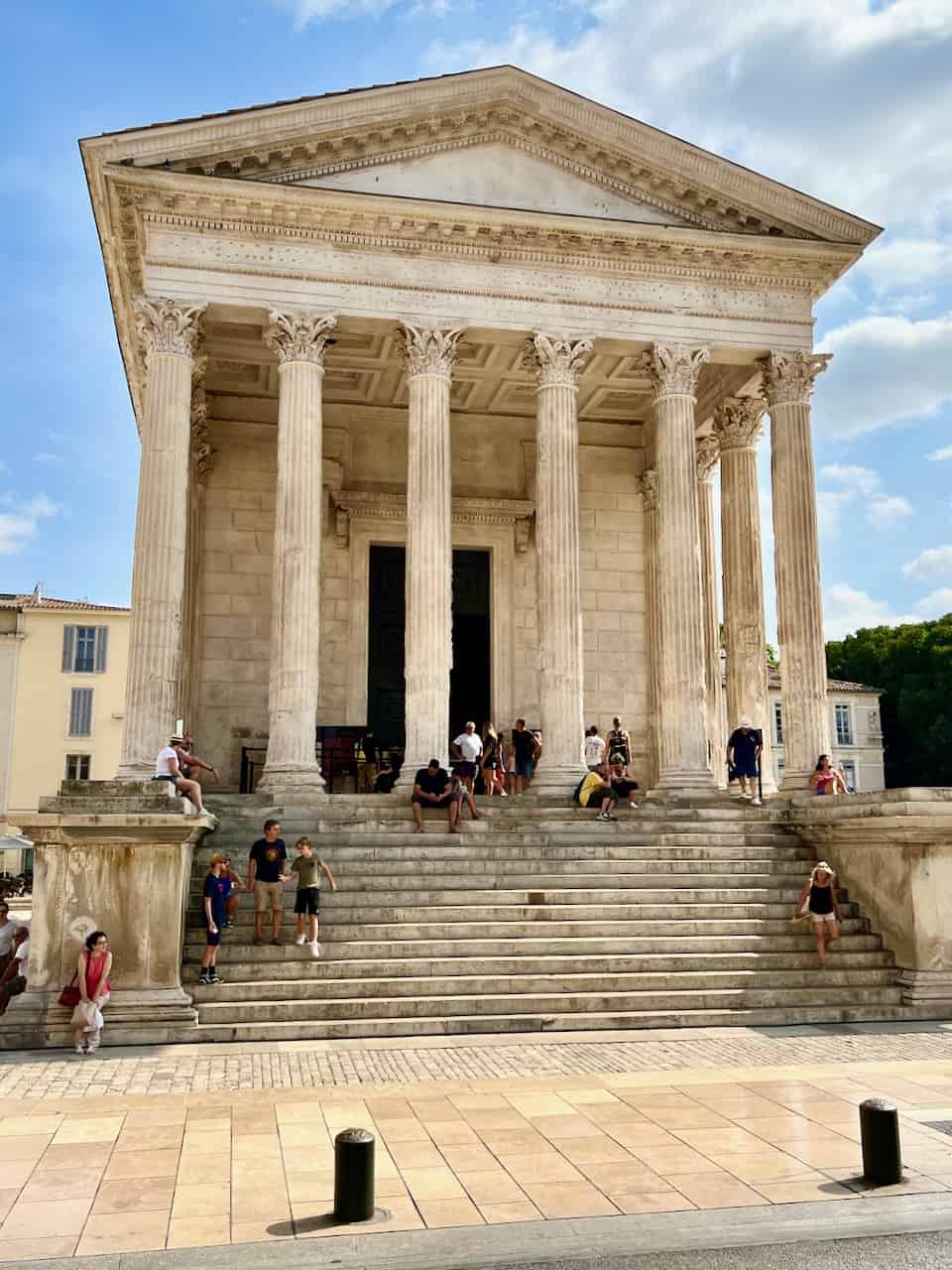
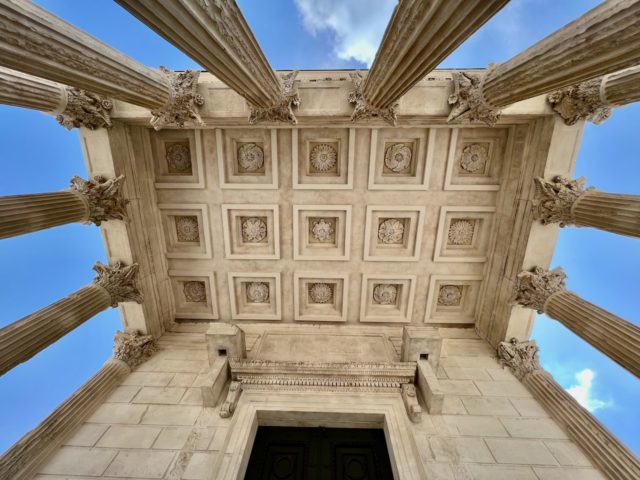
Across the road from Maison Carrée stands a striking building of glass and steel. This is the Carré d’Art museum of contemporary art. Designed by Sir Norman Foster, the museum’s appearance is a modern interpretation of the Maison Carrée.
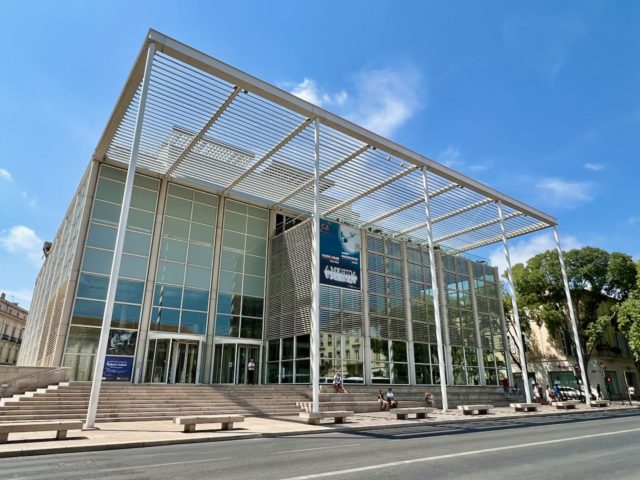
Les Jardins de la Fontaine
From Maison Carrée, I resumed my walk past Place d’Assas to the Quai de la Fontaine. This shady promenade along a canal was a welcome respite from the hot sun.
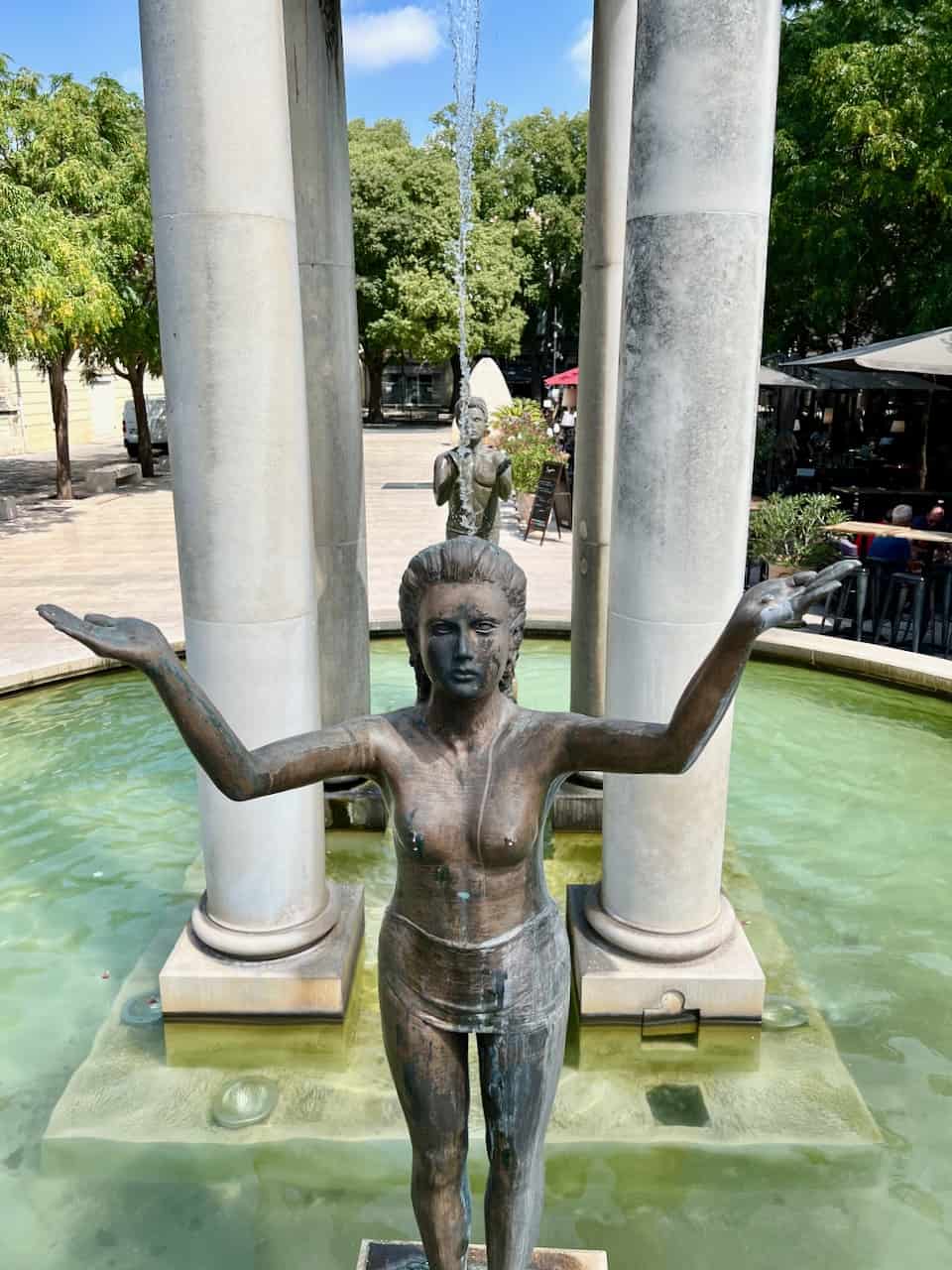
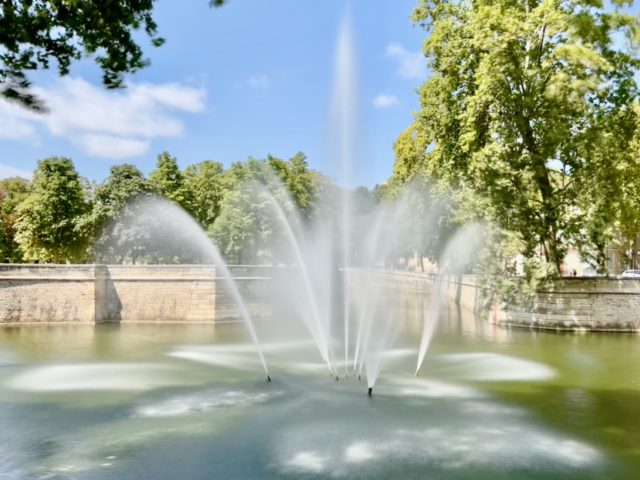
I continued to the Les Jardins de la Fontaine, a resplendent park built in the 18th century. This ornamental park, with its grand ponds and statues, was certainly designed to impress.
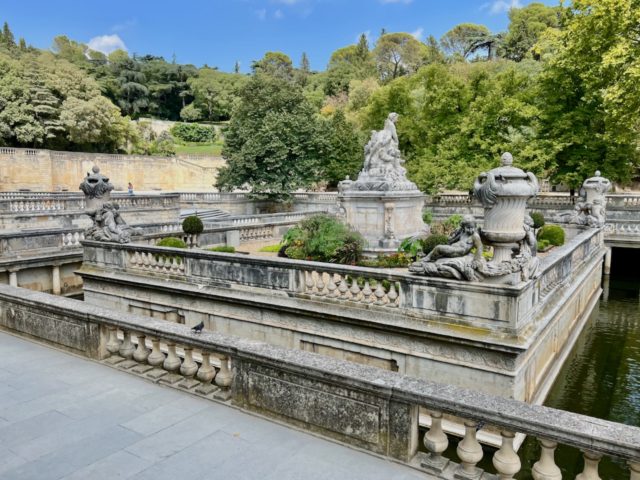
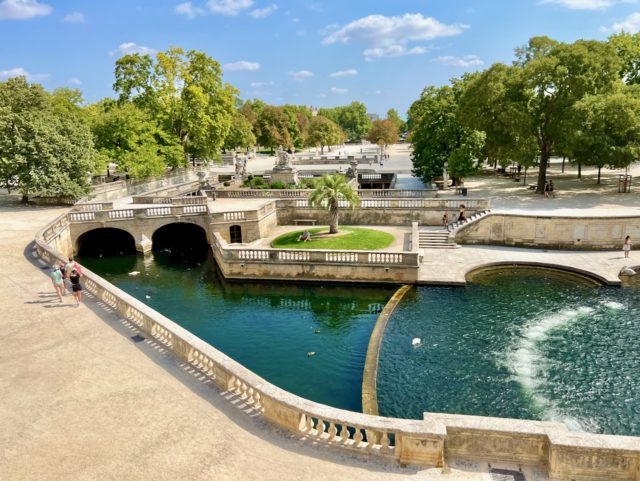
Within the park lies the Temple de Diane. Constructed in the 1st century AD, it was excavated in the 18th century during construction work for the Les Jardins de la Fontaine. Despite its name, there is no evidence that it was a temple dedicated to the Goddess Diana. Instead, experts believe it was a library.
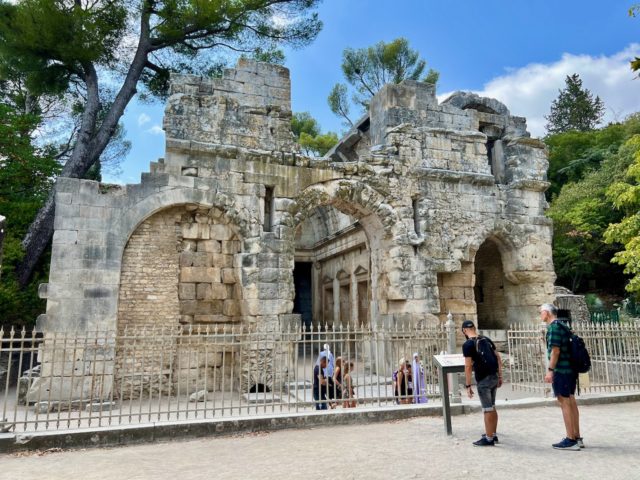
Tour Magne
At the end of the park are a series of low hills, one of which is topped by another Nîmes attraction, the Tour Magne. This 32 meter tall tower was part of the city walls built by Augustus in the 1st century BC. Visitors can climb its 140 steps to the top for panoramic views of Nîmes.
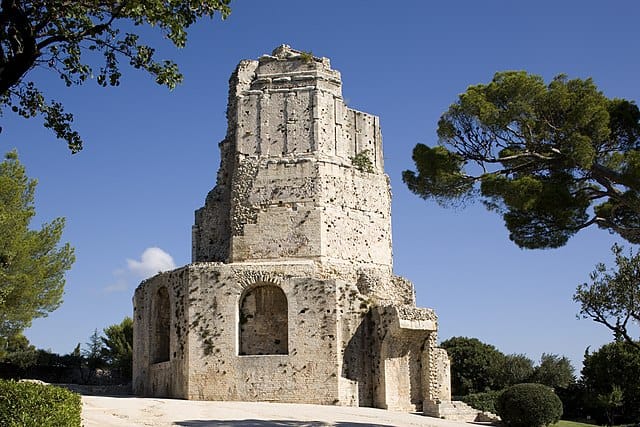
The tower is about a 10-minute uphill walk from the park. As much as I wanted to visit the tower and check out the view, I couldn’t bring myself to climb the hill in the 40 degrees Celsius heat.
Tour de l’Horloge
From the park, I continued my stroll along the Quai de la Fontaine towards the Les Halles market. Unfortunately, the market was closed (opening times: 6am-1:30pm) so I proceeded to Place de l’Horloge, with its 16th century clock tower, Tour de l’Horloge.
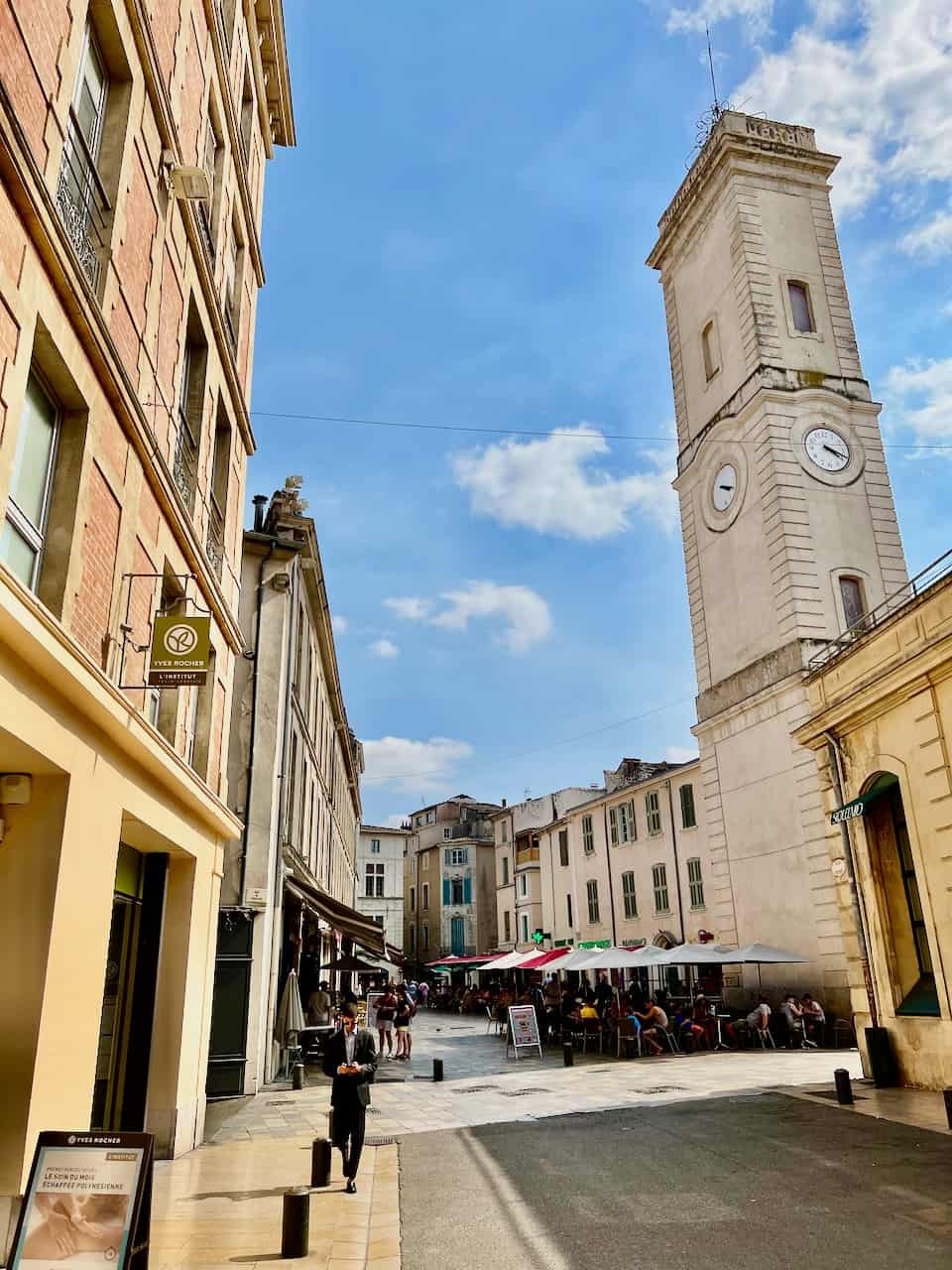
Cathedral of Nîmes
My next stop was the Cathedral of Nîmes, or rather, the Cathédrale Notre-Dame-et-Saint-Castor de Nîmes. This 17th century Romanesque-Gothic cathedral is believed to have been built on the foundations of an ancient Augustinian temple.
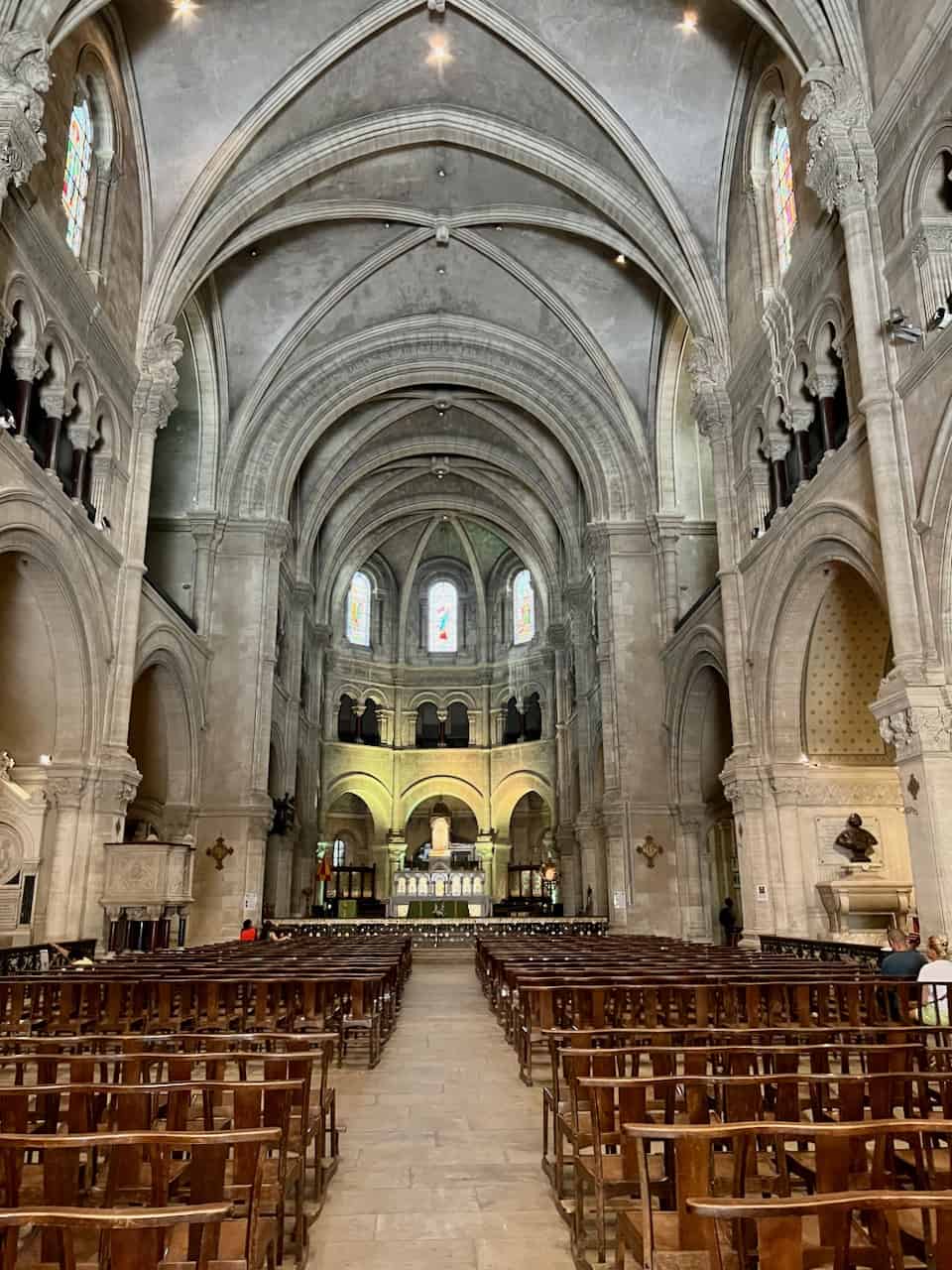
Porte d’Auguste
My last stop was Porte d’Auguste. One of two Roman city gates that still exist today, Porte d’Auguste dates back to the 1st century BC. It was one of the entry points of the Via Domitia. Not much remains of this ancient gate but it’s nevertheless fascinating to see these walls, arches and inscriptions that are more than 2,000 years old.
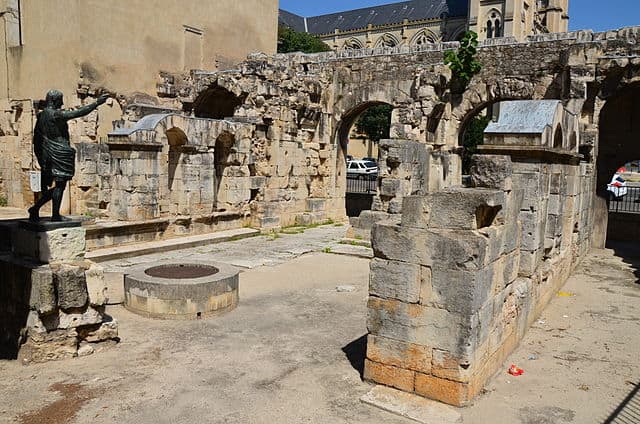
Pont du Gard
Nîmes can easily be reached by train from many cities in the south of France such as Marseille, Montpellier and Avignon. If you have a car, don’t miss visiting another impressive Roman monument near Nîmes: Pont du Gard.
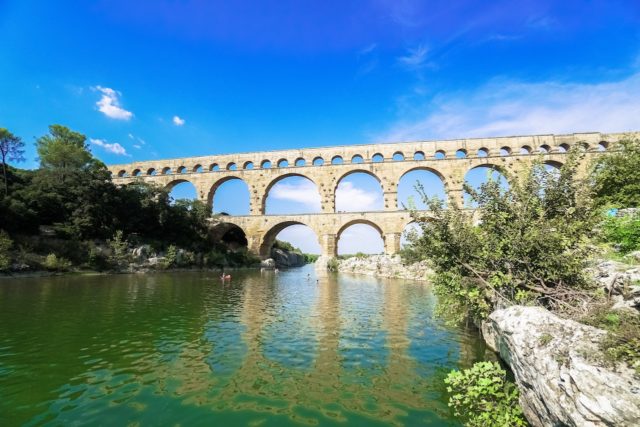
This three-tier aqueduct bridge was built in the 1st century AD to transport water to Nîmes. It is the tallest of all Roman aqueduct bridges and is a UNESCO World Heritage site. The aqueduct is a 35-minute drive from Nîmes.
